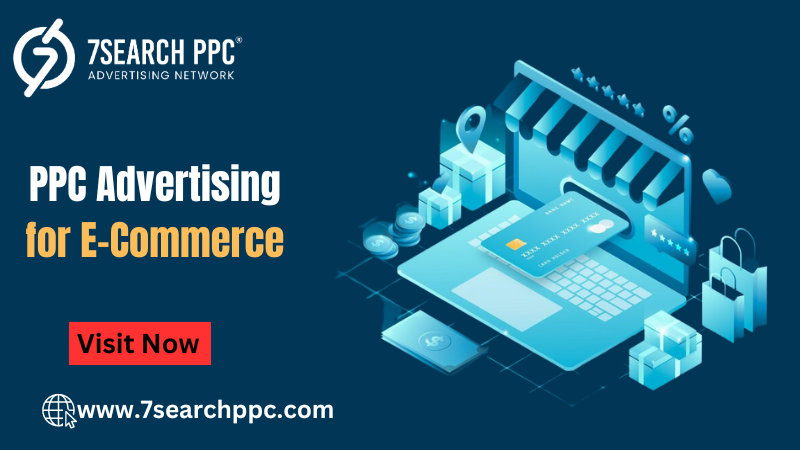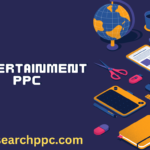In today’s highly competitive digital marketplace, e-commerce businesses are increasingly relying on Pay-Per-Click (PPC) advertising to drive traffic, increase sales, and maximize their return on investment (ROI). With PPC advertising for e-commerce, businesses can attract the right audience, showcase their products, and convert visitors into loyal customers—all while maintaining complete control over their budget.
But how do you create a successful PPC strategy that truly delivers results? Whether you’re working with an e-commerce ads agency or managing your campaigns, understanding the nuances of PPC is crucial for scaling your business and ensuring long-term success.
This article will explore the intricacies of PPC advertising for e-commerce, discuss how to choose the best e-commerce ad platform, and outline strategies to help you maximize your ROI. We will also answer common questions related to e-commerce paid advertising.
What is PPC Advertising for E-Commerce?
PPC advertising for e-commerce involves placing ads on search engines, social media platforms, and other websites, where advertisers pay a fee each time someone clicks on their ad. This advertising model ensures that businesses only pay for the traffic they receive, making it an efficient and cost-effective way to attract potential customers.
For e-commerce brands, PPC ads can take various forms, such as Google Shopping ads, Facebook ads, Instagram ads, or display ads on relevant websites. With the right targeting and ad creative, PPC ads can direct highly relevant traffic to your online store, ultimately boosting sales and maximizing ROI.
Key Benefits of PPC Advertising for E-Commerce
- Instant Visibility and Traffic: Unlike organic SEO strategies that take time to gain traction, PPC ads deliver immediate visibility. This is particularly beneficial for new e-commerce businesses looking to generate sales quickly.
- Precise Audience Targeting: PPC platforms allow for granular targeting, enabling e-commerce brands to reach specific demographics based on factors such as age, location, interests, and even shopping behavior.
- Budget Control: One of the biggest advantages of PPC is that advertisers have full control over their budgets. You can set a daily or monthly limit and adjust your bids based on the performance of your ads.
- Data-Driven Insights: PPC platforms offer detailed analytics that provide insight into the performance of your campaigns. With real-time data, e-commerce businesses can optimize their ads, tweak targeting, and improve overall ROI.
Choosing the Best E-Commerce Ad Platform
The success of your PPC campaigns often hinges on choosing the right e-commerce advertising platform. Each platform has its unique strengths and user base, so selecting the best option for your business is essential.
7Search PP for E-Commerce
7Search PPC is a trusted ad network that offers cost-effective pay-per-click (PPC) advertising solutions for businesses of all sizes. With access to a vast network of high-quality publishers, 7Search PPC helps drive targeted traffic to your website, increasing visibility and conversions. It offers various ad formats, including display, native, and pop-under ads, ensuring that advertisers can reach the right audience while maximizing their return on investment (ROI).
- Pros: Highly targeted, visually appealing ads, ideal for product promotions.
- Cons: Can be expensive, and requires high-quality imagery.
Google Ads for E-Commerce
Google Ads is one of the most popular choices for e-commerce businesses. With Google’s extensive reach, you can target potential customers at every stage of the buying process. Google Shopping ads, in particular, are highly effective for e-commerce brands as they display product images, prices, and descriptions directly in the search results.
- Pros: High visibility, ability to target users with buying intent, vast audience reach.
- Cons: Competitive bidding, can be expensive for certain keywords.
Facebook Ads for E-Commerce
Facebook Ads is another excellent platform for e-commerce paid advertising. With advanced targeting features and a massive user base, Facebook allows e-commerce brands to reach highly specific audiences. Facebook ads can appear in users’ feeds, stories, and even on Instagram, which is integrated into the platform.
- Pros: Highly targeted, visually appealing ads, ideal for product promotions.
- Cons: Requires strong ad creative, platform updates can impact performance.
Instagram Ads for E-Commerce
Since Instagram is owned by Facebook, its advertising options are closely tied to Facebook Ads Manager. Instagram is particularly powerful for visually-driven e-commerce businesses, such as fashion, beauty, and home decor. With a focus on aesthetics, Instagram ads blend seamlessly into users’ feeds, creating a non-intrusive way to showcase your products.
- Pros: Strong visual focus, ideal for lifestyle products, integrates with Facebook Ads.
- Cons: Can be expensive, and requires high-quality imagery.
Amazon Advertising for E-Commerce
Amazon is not just an e-commerce marketplace; it’s also a powerful advertising platform. Amazon ads allow brands to target shoppers at the moment they are ready to buy. Sponsored Product Ads are especially effective for e-commerce businesses selling directly on Amazon’s platform.
- Pros: High-intent audience, seamless shopping experience, strong product-focused ads.
- Cons: Limited to Amazon shoppers, can be competitive.
Other E-Commerce Ad Platforms
Platforms such as Pinterest, LinkedIn, and TikTok are also gaining traction as effective advertising channels for e-commerce businesses. Depending on your target audience and the nature of your products, these platforms may be worth exploring.
Strategies to Maximize ROI with PPC Advertising for E-Commerce
Once you’ve chosen the right platforms for your e-commerce paid advertising, it’s time to fine-tune your strategy. Here are expert tips to help you maximize ROI:
Use Retargeting Campaigns
Retargeting is one of the most effective PPC strategies for e-commerce brands. It targets users who have previously visited your website but did not make a purchase. By showing relevant ads to these visitors as they browse other websites or social media platforms, you can bring them back to complete the transaction.
Optimize Product Listings for Google Shopping Ads
If you’re using Google Shopping ads, make sure your product listings are fully optimized. Include relevant keywords in your product titles and descriptions, use high-quality images, and ensure pricing is competitive. Google uses this information to match your products with user search queries, so the more detailed and optimized your listings, the better your chances of success.
Utilize Dynamic Search Ads
Dynamic Search Ads (DSA) are a great option for e-commerce businesses with large product catalogs. Instead of creating individual ads for every product, DSA automatically generates ads based on the content of your website. This helps save time while ensuring that your ads remain relevant.
Leverage Social Proof
E-commerce customers often rely on reviews and testimonials before making a purchase. Including positive customer reviews or ratings in your PPC ads can help build trust and improve conversion rates.
Test and Optimize Regularly
Constant testing is key to successful PPC advertising for e-commerce. Test different ad copy, visuals, and targeting options to see what resonates best with your audience. Monitor your campaigns regularly and make adjustments based on performance metrics such as click-through rates (CTR), cost-per-click (CPC), and conversion rates.
Focus on Mobile Optimization
A significant portion of e-commerce traffic comes from mobile devices. Ensure that your landing pages and website are optimized for mobile users. Mobile-friendly designs improve user experience, reduce bounce rates, and increase the likelihood of conversions.
Invest in High-Quality Ad Creative
Ad creative plays a huge role in capturing attention and driving engagement. Whether you’re running image ads, video ads, or carousel ads, ensure that the creative elements are visually appealing and aligned with your brand’s message.
Monitor and Adjust Your Bids
Bid management is critical for maintaining a positive ROI. Regularly review your campaign performance and adjust your bids based on factors like ad position, competition, and the cost-per-acquisition (CPA) of each sale.
Conclusion
PPC advertising for e-commerce is one of the most powerful tools available to online retailers today. With its ability to target specific audiences, provide real-time data, and offer control over budgets, PPC can help e-commerce businesses achieve substantial growth. By selecting the best e-commerce ad platform, implementing data-driven strategies, and continuously optimizing your campaigns, you can maximize your ROI and ensure long-term success.
FAQ
What is PPC Advertising for E-Commerce?
Ans. PPC advertising for e-commerce is a digital marketing strategy where businesses pay each time someone clicks on their ad. It is commonly used to drive targeted traffic to e-commerce websites and increase sales.
Which is the Best E-Commerce Ad Platform?
Ans. The best platform depends on your target audience and business goals. Google Ads and Facebook Ads are popular choices, but platforms like Amazon, Instagram, and Pinterest can also be highly effective for certain products.
How Can I Maximize ROI with PPC Ads?
Ans. To maximize ROI, focus on retargeting, optimizing product listings, utilizing dynamic search ads, leveraging social proof, testing regularly, and adjusting your bids based on performance data.
What Budget Should I Allocate for PPC?
Ans. PPC budgets vary based on the size of your business and your goals. Start with a test budget and scale up as you see positive results. It’s also important to monitor your cost-per-acquisition (CPA) to ensure your spending is justified by your revenue.
Is Retargeting Important for E-Commerce?
Ans. Yes, retargeting is essential for e-commerce. It allows you to re-engage visitors who have shown interest in your products but haven’t completed a purchase, increasing your chances of conversion.



